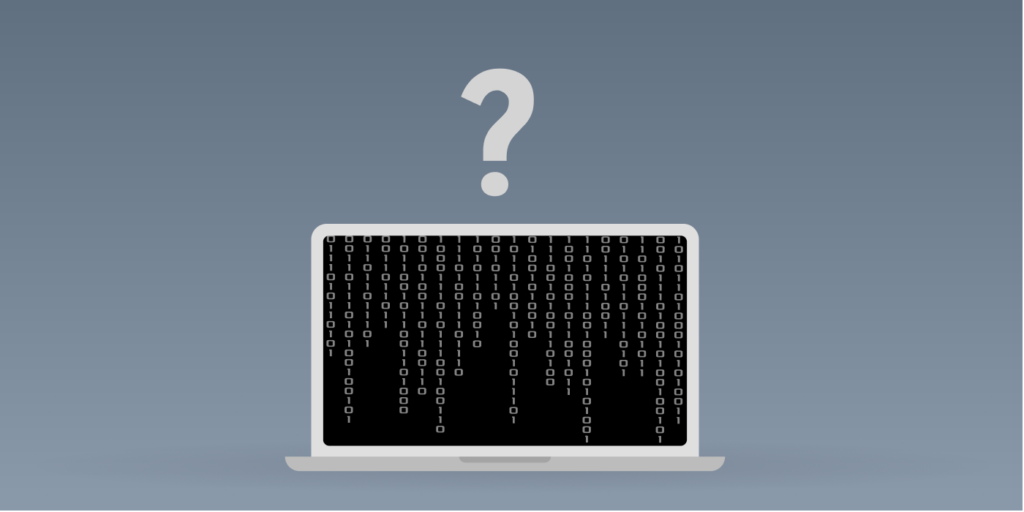Encryption is one of the best ways to protect data and online tools, but it is not the only method. For instance, hashing and encoding are other ways to protect your data, but they are distinct from each other. Explore the differences between hashing and encryption and learn how these two offer cybersecurity options. This guide explains everything in detail.
What is Hashing?

Hashing is the process that transforms data (a key or string or characters) into hash functions of random fixed-length values. If you have plain text login details, such as passwords, you can turn them into a hashed volume that makes it difficult for crackers to figure out.
Hashing, therefore, provides a direct process that isn’t easily reversible. Remember that encryption, like hashing, is not a one-way process and can be redone with the correct description key. So when organizations store data, including passwords, usernames, and other login details, they may apply hash algorithms to ensure that all the data is private, even from cybercriminals attack them.
Also, the hashing method guarantees the integrity of stored data. Anytime you send someone else a hashed file, you give them the message plus the hash value. You have to calculate the hash value first; and if the computed value matches correctly, then it means that no one tampered with the file during the sending process.
But hashing is popular when dealing with large sums of data. It’s good for data organization and also avoids any duplication. The hashing process is also fast and efficient, especially when managing and keeping much data secure.
How Does Hashing Work?

Hash algorithms work by generating hash functions. The functions, also known as hash values, provide different values and functions for each key. Therefore, each input string has a special hash value.
However, keys can sometimes use the same identical hash value. Identical hash values normally occur due to a hash collision.
However, the best hashing algorithm is one that is resistant to hash collision. Collision is a vulnerability in the hash functions that hackers can exploit. So, the ideal algorithm should be sophisticated enough to wade away all possible collisions.
Popular Hashing Algorithms

There are as many hashing algorithms as encryption algorithms, but some are more common and popular among cybersecurity enthusiasts. The top hashing functions utilize the four main methods: Division, Multiplication, Folding, and the Mid-square Method.
Here are some of the top hashing algorithms you can find:
- MD5: MD5 hashing algorithms are an improvement form of the conventional MD4 protocols. The MD4 protocol had several severe security problems and was compromised by its collision attacks. Also, the MD4 hashing cryptographic functions were associated with several complications, including 128-bit 16-byte values that made the computation of checksum strings on the internet possible. However, the protocol compromised the data’s integrity, especially during storage and transmission. While MD5 is not fully resistant to hashing collisions, it is a greater improvement over the MD4 protocols.
- SHA: The SHA hashing cryptographic algorithm is developed by the National Security Agency in 1993. However, the original SHA version has many problems that have been updated over time. Newer patches to the technology are now useful in several cryptographic fields. It is fairly secure compared to the rest, especially due to the sensitivity of hash strings.
- BLAKE3: This hashing function is one of the newest algorithms in the block. It performs far better than MD5 or SHA and is an improvement on BLAKE2. BLAKE3 is popular for WireGuard, the lightning-fast VPN protocol.
- RIPMEND: Hans Dobbertin developed Ripment as one of the top rightographic hash protocols. It is 160-bit long and designed within the EU RIPE project framework.
- WHIRLPOOL algorithm: Paul Buretto and Vincent Richmond created the Whirlpool algorithm. This protocol produces a 512-bit message digest and can be up to 2256 bits long.
- TIGER algorithm: One of the newest encryption protocols is the Tiger protocol. It’s faster, more efficient, and more secure than the other algorithms on this list. Therefore, it’s the most efficient of all the hashing algorithms we have. There’s no restriction, or patents to the TIGER algorithm, which makes it popular among cybersecurity professionals.
Examples of Hashing

Here are the top examples of hash usage:
- Hashing is popular in cryptocurrency systems, especially on platforms that protect users from DDoS attacks.
- Cryptographic hashes are a requirement in digital signatures. The calculation guarantees the efficiency and safety of our digital signature schemes.
- Hashing is an important process for file identification. Hashing protects you from forgery.
- Hashing also preserves the integrity of a file during the mirroring and sharing of all downloading processes. It ensures that all the files remain in their original share and that no one tampers with them.
- Cryptographic hashing is also common during password verification. The procedure of hash digests prevents the compromise of logging details and passwords. Also, the user’s password, with the help of password hash values, is stored during user authentication.
What is Encryption?

Encryption is a process that involves encoding sets of data or information using sophisticated algorithms. It changes the data format so that it is not understandable by anyone except the intended recipient. The intended recipient must have the appropriate keys to reverse the encryption.
Therefore, the decryption process requires specific keys that reorganize the data readably. Like the hashing method of protecting data, encryption is a two-way process. First, information is encrypted on the sender’s end and then on the receiver’s.
Encryption secures general traffic or even sensitive data. It makes internet traffic decipherable to any other person. If you implement the proper cryptographic algorithms, you can keep your data safe from cryptographic attacks.
How Encryption Works?

Encryption uses algorithms (instructions and rules) to convert data into ciphertext. Ciphertext is a form of data that is encrypted and unreadable to anyone unless they have a decryption key.
So, the plaintext gets through encryption algorithms and transforms into ciphertext. You can convert any futile format into ciphertext, including text messages, large or small files, pictures, and videos.
The encryption algorithm relies on unique information called encryption keys to decipher messages. The key normally determines the transformation of files or printed texts into cyphertexts and back to plain texts.
However, these encryption keys can be symmetric or asymmetric, depending on their private key pairing technique.
- Symmetric cryptography: Symmetric encryption keys use one unit for encryption and decryption. Both the cinder and receiver process the same key used for this communication.
- Asymmetric cryptography: Asymmetric cryptography uses asymmetric keys, namely the private and public keys. The public key clips the files and information, and the private key will the crypt and reveal the hidden information. In this case, the public key doesn’t need to be kept secret like the private key.
- Hybrid encryption: Sometimes, you want a blend of symmetric and asymmetric cryptographic keys. Hybrid encryption combines the two, utilizing the strength of both encryption methods and minimizing data systems’ security flaws.
Notably, the encryption process turns original sets of data into Ciphertext. Looks like a mashed-up piece of information that is difficult to understand. But if you have the accurate decryption key, you can convert the safety back to its initial print text form using the algorithmic mathematical operations and formula.
Whenever the algorithm gives you an encryption key, it will also have a description key to convert the cyphertext decrypted data to its original readable format.
Popular Encryption Algorithms

Technological advancement has made systems with airtight encryption algorithms. Some of the best encryption algorithms used in modern data systems and infrastructure include:
- The Advanced Encryption Standard (AES): It is one of the most popular symmetric encryption protocols among international organizations and government departments. It relies on SSL/TLS certification and encryption, which enhances data integrity. SSL and TLS are the encryption you’ll find mostly in Public Key Infrastructure. The institutions and organizations that use this type of encryption standard handle personally identifiable Information (PII), private wireless communication, and business information and data, which is encrypted using AES because of its resistance to cyberattacks.
- The Diffie-Hellman Key Exchange: The Diffie-Hellman Key exchange is an algorithm in which the sender and receiver of information share when using secure communication channels. The key exchange algorithm allows you to secure your exchange keys using symmetric encryption.
- RSA: Rivest, Shamir, and Adleman (RSA) is an abbreviation for the inventors of this public key encryption technique. Founded in 1982, the technology is a development of RSA Data Security Inc. that secures Internet data. Some of the data encrypted by the RSA technique include messages, key exchange, passwords, and digital signatures.
- Blowfish: This algorithm employs symmetric encryption to provide flexible keys with super-fast encryption and decryption processes. This term is useful for businesses that want to transfer files, store passwords, or secure payment methods.
- The triple data encryption standard (3DES): 3DES is another symmetric encryption that uses a data encryption standard (DES) cipher three times. Each of the three DES cipher times has unique keys. 3DES is popular on older systems or with networks that need added compatibility support with encryption standards.
Examples of Encryption

Below is an explanation of how encryption helps in real-life systems.
- End-to-end encryption is popular in modern instant messaging services, protecting the conversations’ privacy.
- Encryption protects you from several forms of cyber attacks. When your connections are encrypted, you can boldly use public Wi-Fi networks or other internet providers without fearing that someone could intercept what you’re looking for.
- Virtual Private Networks (VPNs) use top-level encryption to secure your data and traffic transmitted over any network. So, the VPN makes it nearly impossible for others to intercept or eavesdrop on your online activity.
- File encryption secures your important files so that no one can access their storage or intercept their transmission.
- Encryption protects your overall online traffic from interceptions, snoopers, and hackers. That’s why you need an encryption tool such as a Virtual Private Network (VPN) for your online security. ExtremeVPN lets you access the internet with properly encrypted online traffic so that you can keep cyber criminals away.
Encryption vs. Hashing vs. Encoding

Encryption scrambles plain text files into unreadable ciphertexts and requires a decryption key to restore them to readable form. It is mostly used for handling small bits of information in transit.
On the other hand, Hashing converts plaintexts into a special code that cannot be converted back to readable form. Encoding is the method that turns data into a new format using publicly available algorithms that revert the data back to its original format.
While encryption and hashing are algorithms meant to protect data, encoding is too easy to reverse and, thus, not a sensible way to secure any data. An example is the Base64 website, which allows you to conceal your personal info when uploading your resume by changing the format from .docx to .html. However, once the resume is on the website, potential employers can easily read the file by decoding and downloading the .docx version.
| Capabilities | Hashing | Encryption | Encoding |
|---|---|---|---|
| Reversible | ✘ | ✔ | ✔ |
| Maintain data integrity | ✔ | ✘ | ✘ |
| Protect data on transit | ✘ | ✔ | ✔ |
| Used by apps, websites, and companies | ✔ | ✔ | ✔ |
| Useful for individuals | ✘ | ✔ | ✔ |
| Type of key | Private and public | Private | Public |
Hashing vs. Encryption: Which One to Use

Choosing the right method of protecting your data is a challenge, but you should ask yourself whether the data you are trying to protect is in storage or transit.
Are you moving the data? Then, you should use encryption, which keeps data safe as it moves from one server location to another.
Storage? Storing the data safely means you want it to remain in its initial position and state without anyone tampering with it. Hashing ensures that no one who enters the server carries out any malicious plans on your data.
You can also combine the hashing and encryption algorithms and techniques to keep your data safe. You can hash your passwords to protect login details on the server. However, once someone gains access, you may want to encrypt the data to protect the files.
